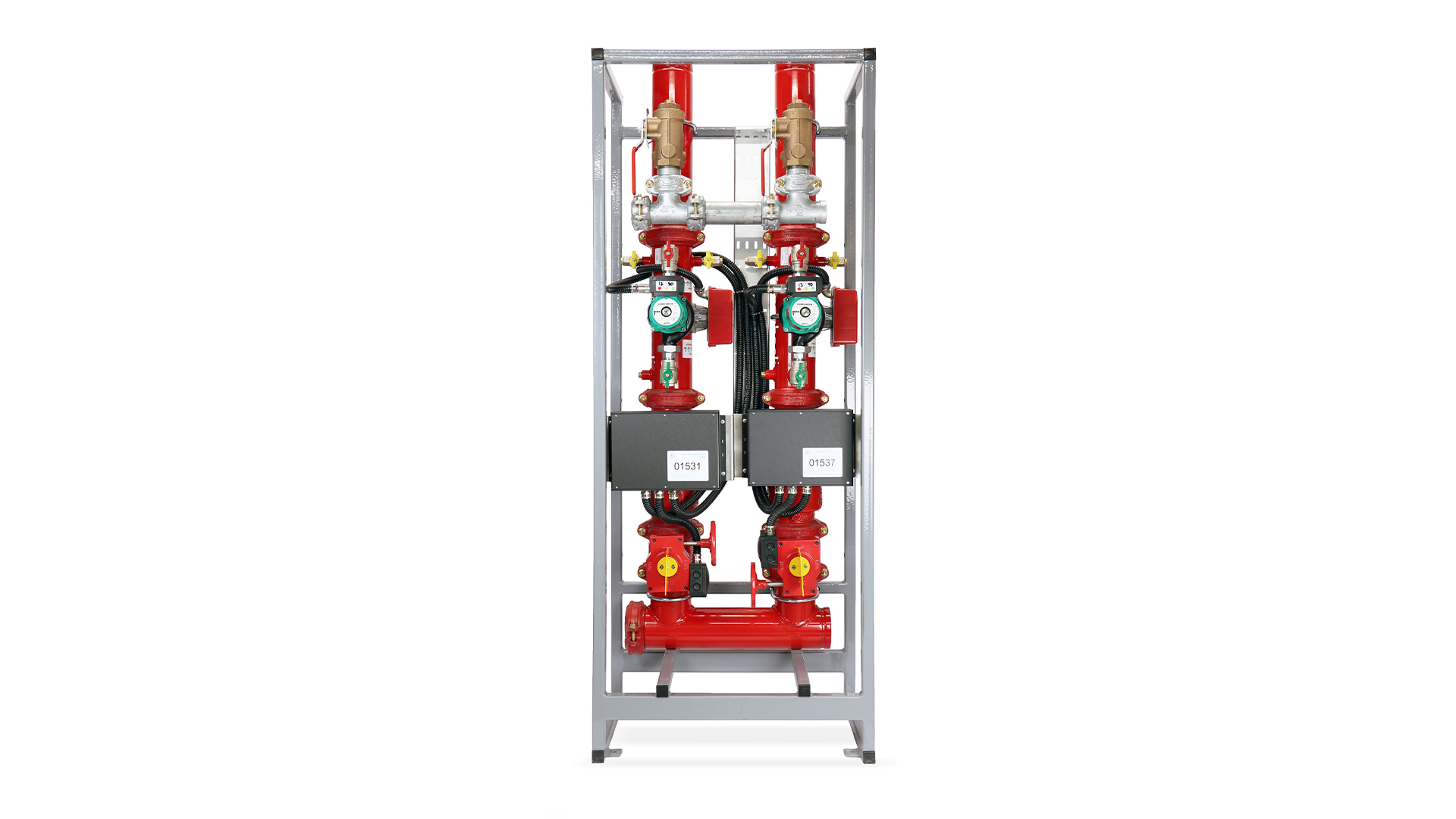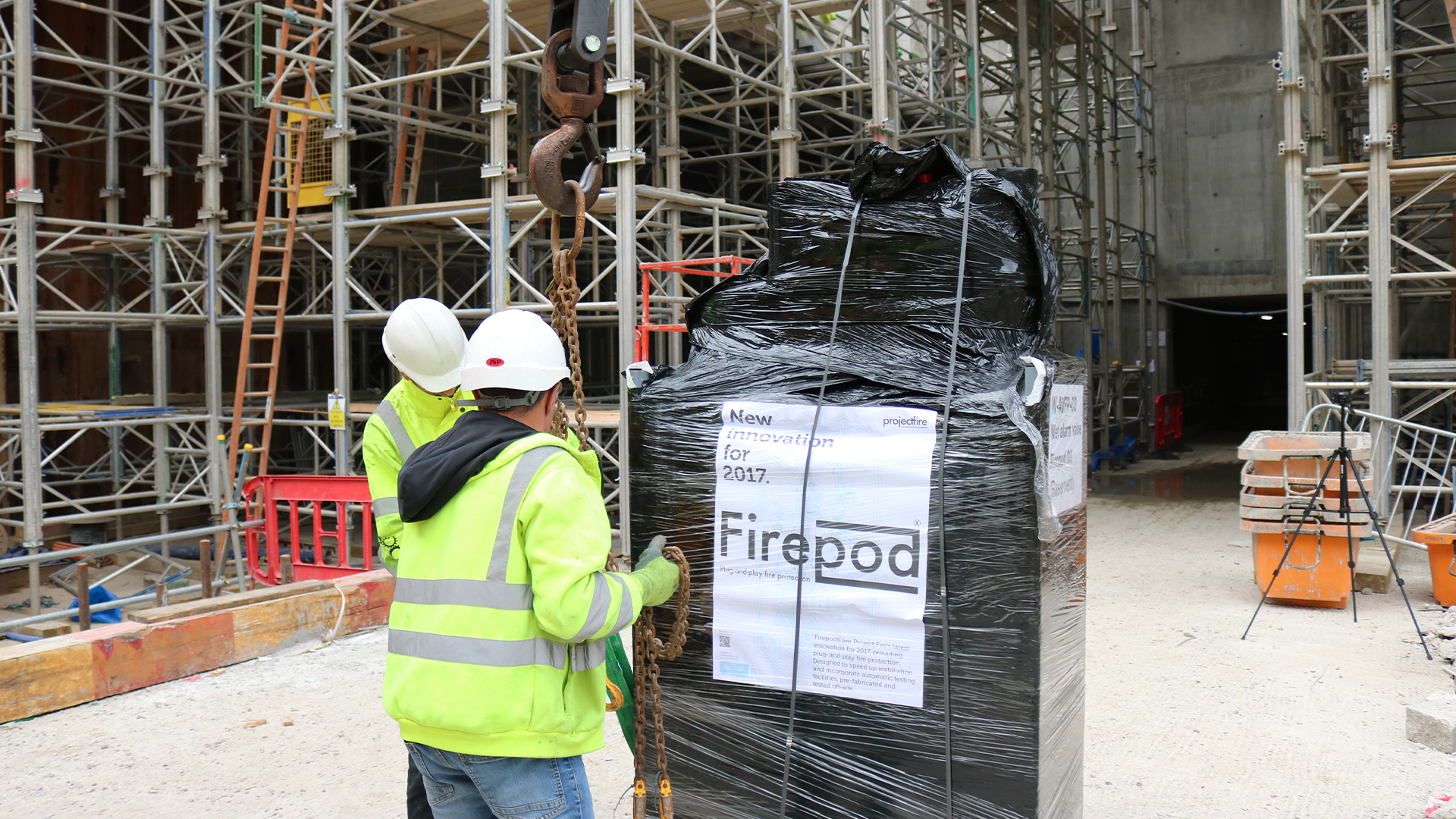“Using prefabricated, modular units can save over 19% on sprinkler shell & core fit out costs.”
Firepod, designed and manufactured by Project Fire, is the first fully-modular sprinkler zone valve/alarm valve and test assembly in the industry. The product has been specifically created for architects, designers, contractors, building developers and owners to offer a solution for the procurement, installation, operation and whole life cost of sprinkler systems in the built environment.
Project Fire commissioned an in-depth and independent cost study by the Building Services Engineering Cost experts, MEPQS. The report details both the cost, staffing and convenience benefits for Firepod, a pre-fabricated, plug-and-play, compact fire sprinkler solution with integrated smart testing and monitoring facilities. The report is based on a new high-rise construction in Canary Wharf, London.
This a summary of the independent report offering a comprehensive study of modular components assembled in factory conditions as well as a comparative analysis with traditional sprinkler zone valve assemblies. Further analysis of the wider construction benefits is also presented as key points of argument for Firepod’s tangible added-value in the design and procurement phase of sprinkler installations.
PREFABRICATION
Off-site prefabrication is an established, and proven option for cellular builds for bathrooms, bedrooms or larger scale buildings, e.g. hotels, apartment blocks and the modular implementation of larger single builds, such as Terminal 5 at Heathrow airport. Factory assembly provides consistency, accuracy and the ability to factory test units, which increase assurance and dependability once installed on site. However, our study has found that Firepod’s standardisation and factory-detailed assembly means the Firepod is able to offer a range of benefits from design, procurement to assembly and final commissioning. Furthermore, the composite package is offered at a discount to the traditional site installation of materials, which is calculated using defined cost modelling methods, and so the collective intangible benefits provide a compelling case for its specification.
ANALYSIS OF COST (ON-SITE VS FIREPOD)
The original standard installation was created from its original design to ensure the quality and integrity normally expected within the context of a competitive tender process, extracted and illustrated in figure (i). This assures the expected integrity for normalised feedback from more than one site installation, given that the project sample used in this cost model originates from a Firepod installation, which was carried out by a sprinkler contractor for the first time.
The actual site feedback of Firepod installation costs were also aggregated against the delivery, installation and commissioning costs, estimated by contractors and based on the design details included with a Firepod.
“We have saved around 70-80% of installation time by using the Firepods on this project. They get delivered to site and are in position, ready to be connected within a couple of hours. As a project manager, using Firepods certainly takes away a lot of the stress and hassle usually associated with high-rise projects.”
Product selection, particularly when using multiple sources, provided another area of risk to the assimilation of costs on a fair and equal basis. To mitigate this, the original design engineers were provided with details of components in order to validate the comparison. The cost model contrasts a working example installing 3no. zones to each floor of either (figure i) a standard component site installation or; the prefabricated modular Firepod installation.
SPACE SAVINGS AND INCREASED RENTAL YIELDS
The parameters in table (i) (see full report for details) show the additional yield from space that the Firepod saves. The amount of space the Firepod saves is equal to the gross additional rent of £166,827.51.
“The commercial advantage of specifying Firepods pays for the entire installation within its life-cycle even without taking all the Zonecheck testing benefits into account.”
TOTAL POTENTIAL
The requirements for builder work and/or recommendations for specific projects by Building Control and regulatory bodies, who provide fire protection advice, cannot be factored in as predictable elements for cost. The data above does not empirically define the wider benefits of specifying Firepods.
Cost feedback from previous and similar installations was obtained from a range of sources including contractors, consultants, component suppliers as well as historical project cost data. This was obtained without an identical parallel block, which was constructed using the standard zone valve installation.
The report has found that the cost savings a specified Firepod provides means that the entire installation fee will be paid back in full within its lifecycle, without taking into account any Zonecheck testing and cost benefits.
During the design phase, a pre-modelled Firepod can be dropped into a Level 2 BIM model as a preconfigured item and will help reduce time spent on CAD preparing detailed construction designs. In addition, Firepod will lower the risk of design failure, due to the fact that sprinklers are commonly a design and build package. Reduction in site wastage, as well as the reduction in man-hours and management hours required on site, contribute to reductions in carbon footprint and BREEAM points when contrasted with multiple site deliveries for individual components.
This report finds that Firepod is a well-suited solution to control project schedules and budgets while increasing quality and reducing environmental impact. The Firepod’s off-site construction is especially effective when employed to shorten building cycles, on repetitious or unique projects, and with teams that are prepared to embrace the challenges and opportunities associated with its delivery.

